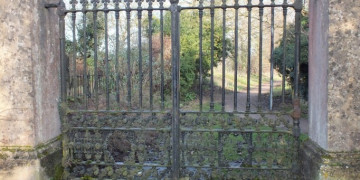Case study: Corbett Hospital Wrought Iron Gates
Restoring a set of wrought iron gates after they had been hit by a van.
Gates were removed along with their pintle blocks and hinge straps. The gate was blast cleaned to SA2.5 to remove surface rust and corrosion. Sections of the gates were then unpinned and dismantled to allow rust between members to be cleaned out. Once free of rust, joints were recreated as required and riveted back together. Missing scroll sections were recreated in genuine recycled wrought iron and riveted in place. The gates received a 3-coat epoxy paint system with the lettering picked out in white.
Corbett Hospital Gates: A Means of Infection Control
The original Corbett Hospital in Amblecote, previously named Hill House, was bought by John Corbett in 1891. He converted the existing house into a hospital, which opened its doors for the first time in 1893, originally designated for the treatment of industrial injuries
He claimed the hospital was to be donated to the people in a philanthropic manner; however, the old gates and former Corbett Hospital Lodge played a significant part in keeping many of the locals out.
Corbett believed in helping those who helped themselves; as such, the Hospital could only be entered by means of a ticket, which could only be obtained through a paid subscription through an employer or workers' association.
The lodge and gates acted as a first point of contact, where a resident porter would check the relevant paperwork to ensure entrance was only made by those in industrious labour.
Additionally, with the lodge primarily serving injuries which would almost certainly have required extensive surgery, and this being an era before antibiotics in which doctors were not under the same scrutiny with regard to infection control, the lodge and gates were also there to keep infectious diseases out.
The great killers of the late Victorian and early Edwardian period, namely diphtheria and measles, would have spread like wildfire in a surgical hospital. Any infectious patients would never have made it past the hospital gates, being turned away to seek treatment at the local workhouse infirmary.
Sadly, only the lodge and gates now remain of the original hospital.
Back to case studies









